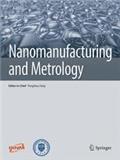
纳米制造与计量(英文)(Nanomanufacturing and Metrology) 知网目次万方目次维普目次
- 高T3
- 国级普刊
- 主管单位:
教育部
- 主办单位:
天津大学、国际纳米制造学会(ISNM)和Springer-Nature出版集团
- 国际刊号:
2520-811X;EISSN 2520-8128
- 国内刊号:
12-1463/TB
- 学科分类:
- 字数:
6000-42000
- 有无基金:
/有基金 100.0%
- 周期:
CN外文-季刊
- 特殊属性:
外文期刊
- 电话:
022-27892181(202304期)
- 邮箱:
nanomme@126.com(202304期)
- 复合因子:
0
- 综合因子:
0
- 收录:
知网目次,万方目次,维普目次
- 级别:
高T3,国级普刊
期刊简介
《纳米制造与计量》期刊已被查看: 次
更新频次
单位占比
一作占比
/有基金-100.0%投稿指南
1、投稿方式:在线投稿。
2、刊内网址:(202304期)
http://www.springer.com/journal/41871
https://link.springer.com/journal/41871
3、投稿系统:
https://www2.cloud.editorialmanager.com/nmme
4、主办单位:
http://www.tju.edu.cn/info/1057/1217.htm(天津大学)
5、刊内邮箱:nanomme@126.com
6、刊内电话:022-27892181
7、出刊日期:季刊,逢季末月出版。
8、刊内微信公众号:纳米制造与计量(NanoMME)
2024年4月15日星期一
《纳米制造与计量(英文)》
(Nanomanufacturing and Metrology)期刊介绍
【主办单位天津大学信息】
Nanomanufacturing and Metrology(N&M)于2018年创刊,季刊,是纳米制造与计量领域第一本国际学术期刊,由教育部主管,天津大学、国际纳米制造学会(ISNM)和Springer-Nature出版集团共同主办。2017年,N & M入选由中国科协等六部委联合实施的“中国科技期刊国际影响力提升计划” D类项目资助,并于2019年3月经国家新闻出版署批准正式在国内出版发行。N & M采用国际化办刊模式,稿件录用后三周即可在SpringerLink上在线出版(https://link.springer.com/journal/41871),2018、2019年的所有录用稿件均免费OA发表。主要刊登高水平的原创论文、快讯、评论文章、技术报告和案例研究等,刊登范围包括但不限于:纳米、原子和微米尺度的制造与计量,与微米、纳米及原子制造与计量相关的物理、化学、生物与材料问题以及相关的工具和过程等。
我要投稿:https://www.editorialmanager.com/nmme/default.aspx
电话:022-27892181 邮箱:nanomme@126.com
《纳米制造与计量(英文)》
(Nanomanufacturing and Metrology)投稿指南
【官网信息】
Nanomanufacturing and Metrology
Submission guidelines
Instructions for Authors
Editorial procedure
Double-blind peer review
This journal follows a double-blind reviewing procedure. Authors are therefore requested to submit:
A blinded manuscript without any author names and affiliations in the text or on the title page. Self-identifying citations and references in the article text should be avoided.
A separate title page, containing title, all author names, affiliations, and the contact information of the corresponding author. Any acknowledgements, disclosures, or funding information should also be included on this page.
Manuscript Submission
Submission of a manuscript implies: that the work described has not been published before; that it is not under consideration for publication anywhere else; that its publication has been approved by all co-authors, if any, as well as by the responsible authorities – tacitly or explicitly – at the institute where the work has been carried out. The publisher will not be held legally responsible should there be any claims for compensation.
Permissions
Authors wishing to include figures, tables, or text passages that have already been published elsewhere are required to obtain permission from the copyright owner(s) for both the print and online format and to include evidence that such permission has been granted when submitting their papers. Any material received without such evidence will be assumed to originate from the authors.
Online Submission
Please follow the hyperlink “Submit manuscript” on the right and upload all of your manuscript files following the instructions given on the screen.
Please ensure you provide all relevant editable source files. Failing to submit these source files might cause unnecessary delays in the review and production process.
MS Word Template
Authors are required to use the template prepared in Microsoft Word format for Nanomanufacturing and Metrology in writing manuscripts.
Manuscripts should be at least 6 pages single-spaced.
Template (Download doc, 523 kB)
Types of Papers
Original articles: a generic term for a full-length, original research finding paper that doesn't fall into another specialized category.
Review papers: a paper summarizing the state of research on a topic. These can often be somewhat long and as a general rule, only review papers invited by the Editor-in-Chief are considered and the author being invited must be the first author and the corresponding author of the paper. However, authors can submit a proposal for a review article to the Editor-in-Chief. The proposal will be evaluated by the Editor-in-Chief or the Executive Editor. If the proposal is positively evaluated, authors can submit the review article for consideration. Category can include meta-analysis, but doesn't have to. This may also be the umbrella that commentaries fall under, but not always.
Communications: These papers communicate findings that editors believe will be interesting to many researchers, and that will likely stimulate further research in the field. Rapid Communications are usually published soon after submission to the journal, so this format is useful for scientists with results that are time sensitive (for example, those in highly competitive or quickly-changing disciplines). This format often has strict length limits, so some experimental details may not be published until the authors write a full Original Research manuscript. Many journals also refer to this type of manuscript as a Letter.
Technical report:a document that describes the process, progress, or results of technical or scientific research or the state of a technical or scientific research problem. They rarely undergo comprehensive independent peer review before publication. Where there is a review process, it is often limited to within the originating organization.
Case studies: these articles report specific instances of interesting phenomena. A goal of Case Studies is to make other researchers aware of the possibility that a specific phenomenon might occur. This type of study is often used in medicine to report the occurrence of previously unknown or emerging pathologies.
Title Page
Please make sure your title page contains the following information.
Title
The title should be concise and informative.
Author information
The name(s) of the author(s)
The affiliation(s) of the author(s), i.e. institution, (department), city, (state), country
A clear indication and an active e-mail address of the corresponding author
If available, the 16-digit ORCID of the author(s)
If address information is provided with the affiliation(s) it will also be published.
For authors that are (temporarily) unaffiliated we will only capture their city and country of residence, not their e-mail address unless specifically requested.
Abstract
Please provide an abstract of 150 to 250 words. The abstract should not contain any undefined abbreviations or unspecified references.
For life science journals only (when applicable)
Trial registration number and date of registration
Trial registration number, date of registration followed by “retrospectively registered”
Keywords
Please provide 4 to 6 keywords which can be used for indexing purposes.
Declarations
All manuscripts must contain the following sections under the heading 'Declarations'.
If any of the sections are not relevant to your manuscript, please include the heading and write 'Not applicable' for that section.
To be used for all articles, including articles with biological applications
Funding (information that explains whether and by whom the research was supported)
Conflicts of interest/Competing interests (include appropriate disclosures)
Availability of data and material (data transparency)
Code availability (software application or custom code)
Authors' contributions (optional: please review the submission guidelines from the journal whether statements are mandatory)
Additional declarations for articles in life science journals that report the results of studies involving humans and/or animals
Ethics approval (include appropriate approvals or waivers)
Consent to participate (include appropriate statements)
Consent for publication (include appropriate statements)
Please see the relevant sections in the submission guidelines for further information as well as various examples of wording. Please revise/customize the sample statements according to your own needs.
Article Highlights
Please provide three short bullet points (maximum of 120 characters each) summarizing the key findings and implications of the paper. These should be presented in non-technical language and not repeat verbatim text found in the abstract. They should be placed beneath the abstract under the heading of ‘Article Highlights’.
Text
Text Formatting
Manuscripts should be submitted in Word.
Use a normal, plain font (e.g., 10-point Times Roman) for text.
Use italics for emphasis.
Use the automatic page numbering function to number the pages.
Do not use field functions.
Use tab stops or other commands for indents, not the space bar.
Use the table function, not spreadsheets, to make tables.
Use the equation editor or MathType for equations.
Save your file in docx format (Word 2007 or higher) or doc format (older Word versions).
Manuscripts with mathematical content can also be submitted in LaTeX. We recommend using Springer Nature’s LaTeX template.
Headings
Please use the decimal system of headings with no more than three levels.
Abbreviations
Abbreviations should be defined at first mention and used consistently thereafter.
Footnotes
Footnotes can be used to give additional information, which may include the citation of a reference included in the reference list. They should not consist solely of a reference citation, and they should never include the bibliographic details of a reference. They should also not contain any figures or tables.
Footnotes to the text are numbered consecutively; those to tables should be indicated by superscript lower-case letters (or asterisks for significance values and other statistical data). Footnotes to the title or the authors of the article are not given reference symbols.
Always use footnotes instead of endnotes.
Acknowledgments
Acknowledgments of people, grants, funds, etc. should be placed in a separate section on the title page. The names of funding organizations should be written in full.
……
更多详情:
https://www.springer.com/journal/41871/submission-guidelines
上一篇:科技考古(集刊)(不收版面费)下一篇:司法改革论评(集刊)
《纳米制造与计量》同类自科综合期刊
-

科学技术与工程
北核,科核,武A-,CACJ-权威
CN中文-旬刊影响因子1.543
-
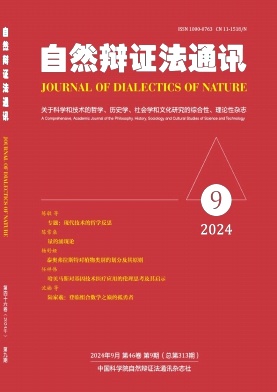
自然辩证法通讯(不收版面费审稿费)
C刊,北核,科核,AMI核心,武A-
CN中文-月刊影响因子1.052
-
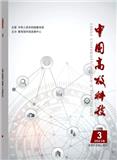
中国高校科技(原:中国高校科技与产业化)
AMI扩,武B+
CN中文-月刊影响因子1.63
-
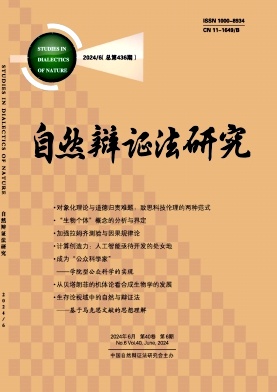
自然辩证法研究
C刊,北核,科核,AMI核心,武A
CN中文-月刊影响因子1.066
-
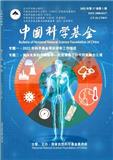
中国科学基金(不收版面费)
北核,C扩,CSCD,科核,AMI扩,武B+
CN中文-双月刊影响因子2.712
-
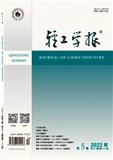
轻工学报(原:郑州轻工业学院学报(自然科学版))(不收版面费审稿费)
北核,武B+,CACJ-入库
CN中文-双月刊影响因子1.025
-
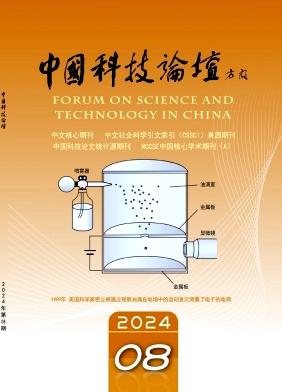
中国科技论坛
C刊,北核,科核,武A,AMI扩
CN中文-月刊影响因子2.895
-
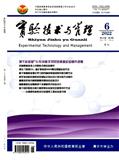
实验技术与管理
北核,科核,武A+
CN中文-月刊影响因子1.849
常见问题
-
纳米制造与计量杂志社官网、联系方式是什么?
纳米制造与计量杂志社官网:https://link.springer.com/journal/41871
投稿网址:https://www.editorialmanager.com/nanm联系电话:022-27892181(202304期)
投稿邮箱:nanomme@126.com(202304期) -
纳米制造与计量杂志是核心期刊么?
纳米制造与计量不是核心期刊,级别是:高T3,国级普刊, 是:自科综合分类下的知网目次,万方目次,维普目次收录的期刊。
-
请问你们是纳米制造与计量杂志社吗?
我们不是《纳米制造与计量》杂志社。本站主要从事期刊信息展示与期刊推荐,不是任何杂志官网,直投稿件请联系杂志社。本站仅提供免费的学术指导、论文辅导、期刊投稿信息整理收集服务。
-
你们指导服务后可以保证文章被发表吗?
期刊发表的成功与否,主要取决于文章内容的质量。编辑老师会根据研究领域、创新性等多因素进行考量。我们会帮助您理解期刊的发表要求,助力提升发表几率,从而增加发表的机会。
-
晋级论文能否在报纸上发表?
在学术界,论文的发表往往被视为研究者职业发展的重要一环。晋级论文,即为了获得更高职称或学术地位而撰写的学术论文,通常需在专业期刊上发表。然而,许多人可能会问
